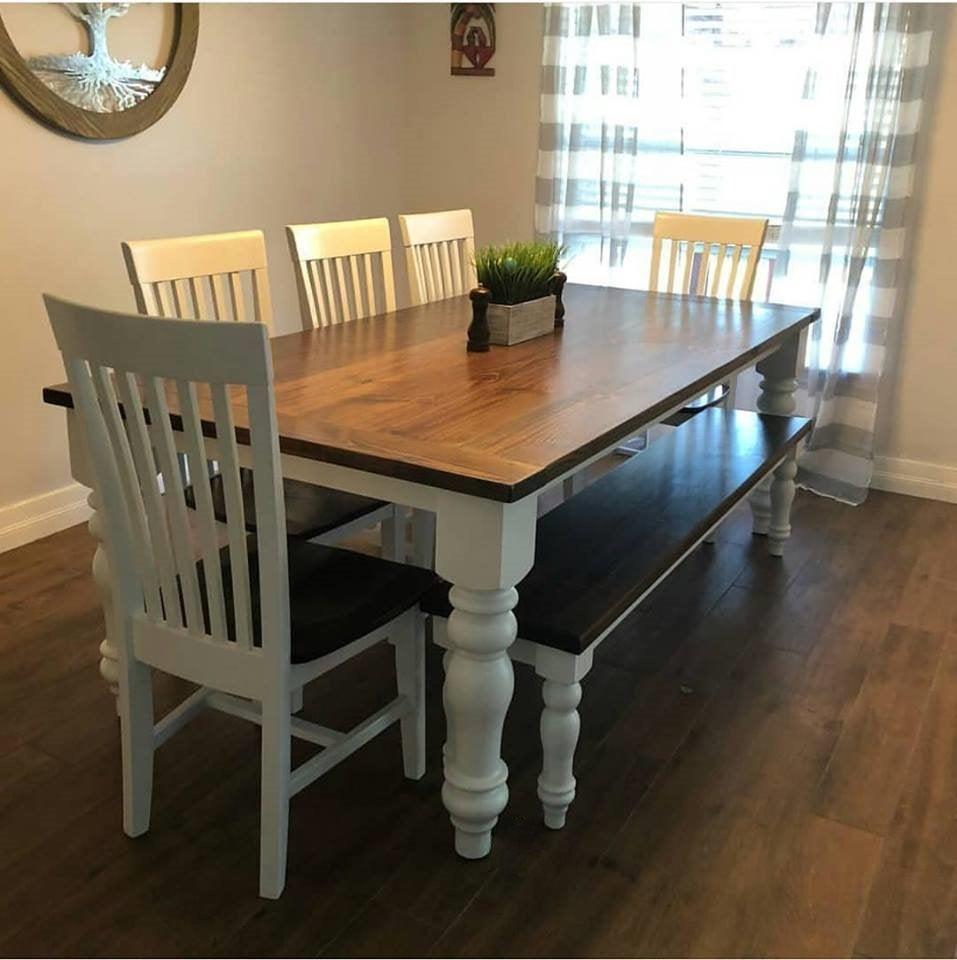An In-depth Take A Look At Table Leg Styles: Locating the Suitable Suit
Choosing the best dining table leg design is critical for both visual charm and functional performance. Traditional 4 legs use timeless style and stability, while the pedestal base provides raised legroom and a contemporary look. For those with bigger tables, trestle legs guarantee strong support, whereas barrette legs introduce a mid-century modern ambiance with their minimalist style. The x-shaped legs blend modern style with boosted stability. Each of these alternatives brings distinct advantages, making the selection greater than just an issue of preference. Check out further to uncover which style flawlessly matches your dining room and way of life.
Conventional Four Legs
Amongst the different types of dining table leg styles, the conventional four-leg design remains a classic selection for several houses. Four legs offer well balanced support, guaranteeing the table remains steady and capable of bearing significant weight (dining room table legs).
From a visual point of view, the conventional four-leg design can be easily adjusted to numerous interior styles. Whether crafted from timber, metal, or a combination of materials, these legs can be intricately sculpted, streamlined and minimalistic, or anything in between. Their adaptability enables them to complement both rustic and modern setups perfectly.
Moreover, the uncomplicated framework of the four-leg design promotes convenience of activity and placement within an area. Unlike even more complex bases, this design reduces obstructions, giving adequate legroom for diners. In recap, the conventional four-leg table leg style weds withstanding beauty with practical performance, making it a sharp choice for those looking for both kind and feature in their dining furnishings.
Pedestal Base
Typically commemorated for its elegant and space-efficient design, the pedestal base is a recognized choice to the conventional four-leg arrangement in eating table leg styles. Without corner legs, diners are paid for higher flexibility of activity, making it an ideal choice for round and oval tables that promote more intimate and inclusive celebrations.
Furthermore, the pedestal base's central support can deal with considerable weight, permitting making use of much heavier tabletops, such as marble or thick hardwood. This strength coupled with its aesthetic flexibility makes the pedestal base a popular choice in both conventional and contemporary interior settings. It can seamlessly incorporate with different style motifs, from traditional elegance to minimalist modernity. The central column itself supplies a canvas for detailed layouts and creative expressions, including an aspect of aesthetic interest underneath the table. In summary, the pedestal base integrates performance snappy, making it a refined and practical alternative for varied dining atmospheres.
Trestle Legs
Trestle legs offer a durable and ageless foundation for eating tables, defined by their horizontal cross-bracing and strong support light beams. Originating from medieval times, this design has actually developed yet preserved its necessary structure, making it a perennial fave in both standard and contemporary settings. The main trestle beam, usually supported by two or more vertical blog posts, provides exceptional security, permitting bigger table lengths without the requirement for added legs.
A considerable benefit of trestle leg tables is the ample legroom they use. Unlike tables with 4 corner legs, the lack of blockages at the table's edges supplies unblocked space for chairs and diners, boosting comfort and availability. This makes trestle tables ideal for fitting bigger celebrations, whether in a dining-room or a banquet hall.
The aesthetic convenience of trestle legs is you could try these out significant. Available in a range of products such as timber, metal, and composite, they can be completed to enhance a vast range of interior styles. From rustic farmhouse to streamlined contemporary styles, trestle legs can be personalized to fit specific tastes. Their long-lasting charm and useful benefits make trestle legs an engaging selection for those seeking both design and practicality in their dining table.
Barrette Legs

The charm of barrette legs lies in their simplicity and convenience - dining room table legs. Available in a series of products, including steel and brass, they can be completed in numerous shades to complement different indoor designs. Whether coupled with a rustic wooden table top or a contemporary glass surface, barrette legs easily mix functionality with a touch of vintage appeal
Durability is another significant attribute of hairpin legs. Despite their delicate appearance, these legs are crafted to birth substantial weight, making sure the table remains stable and protected. Furthermore, they are fairly simple to mount, making them a preferred selection for DIY enthusiasts navigate to these guys and professional furniture makers alike.
X-Shaped Legs

Built from products such as steel, wood, or a combination of both, X-shaped legs can be customized to match various style choices. Steel legs usually offer a sleek and industrial feel, ideal for loft-style apartment or condos and contemporary eating spaces. On the other hand, wood X-shaped legs supply a warmer, a lot more rustic allure, suitable for farmhouse or eclectic insides. The versatility in materials enables homeowners to personalize their table to better fit their general style system.
Furthermore, the design behind X-shaped legs makes sure also weight distribution, minimizing the risk of wobbling and enhancing sturdiness. This makes them specifically his comment is here fit for bigger dining tables that need extra assistance. In significance, X-shaped legs mix functional design with contemporary appearances, making them a timeless selection for varied eating atmospheres.
Final Thought
A thorough understanding of dining table leg styles discloses the distinct characteristics and benefits of each layout. Trestle legs make sure durable assistance for bigger tables, and barrette legs present a mid-century modern aesthetic.